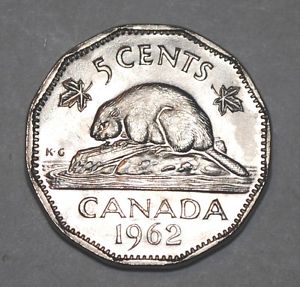On Nov. 8, 1962 the Government of Canada issued a proclamation to authorize the production of round five-cent coins.
The 12-sided shape had been introduced in 1942 to help Canadians distinguish the wartime bronze-coloured tombac coins from copper cents.
Tombac, also used on British three-pence coins, was adopted to save on nickel, in high demand during the Second World War for the production of armaments and munitions.
The coin had returned to nickel after war, while the shape had been retained for 20 years. While distinctive and popular, it was causing problems at the Mint. The coin was composed of nickel, a notoriously hard metal which required a high striking pressure. The unusual shape created a weakness in the collar dies, which tended to develop cracks at the corners.
Now, with a booming economy meaning more demand for coins, the Royal Canadian Mint wanted to save both time and money.
The change ushered in a decade of numismatic change that would see the 1967 commemorative program, and conversion of the 10-cent through to dollar coins from silver to nickel.

